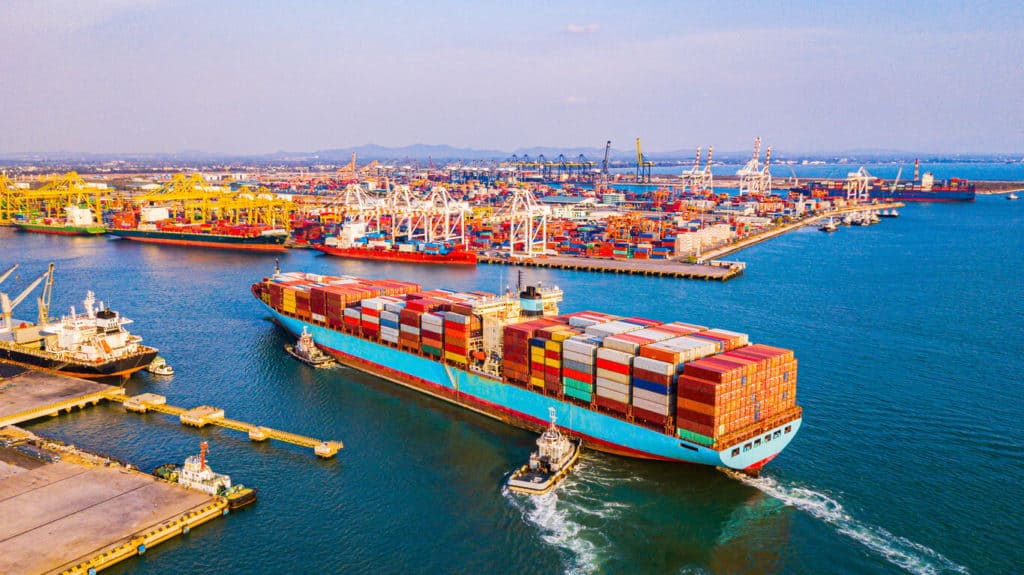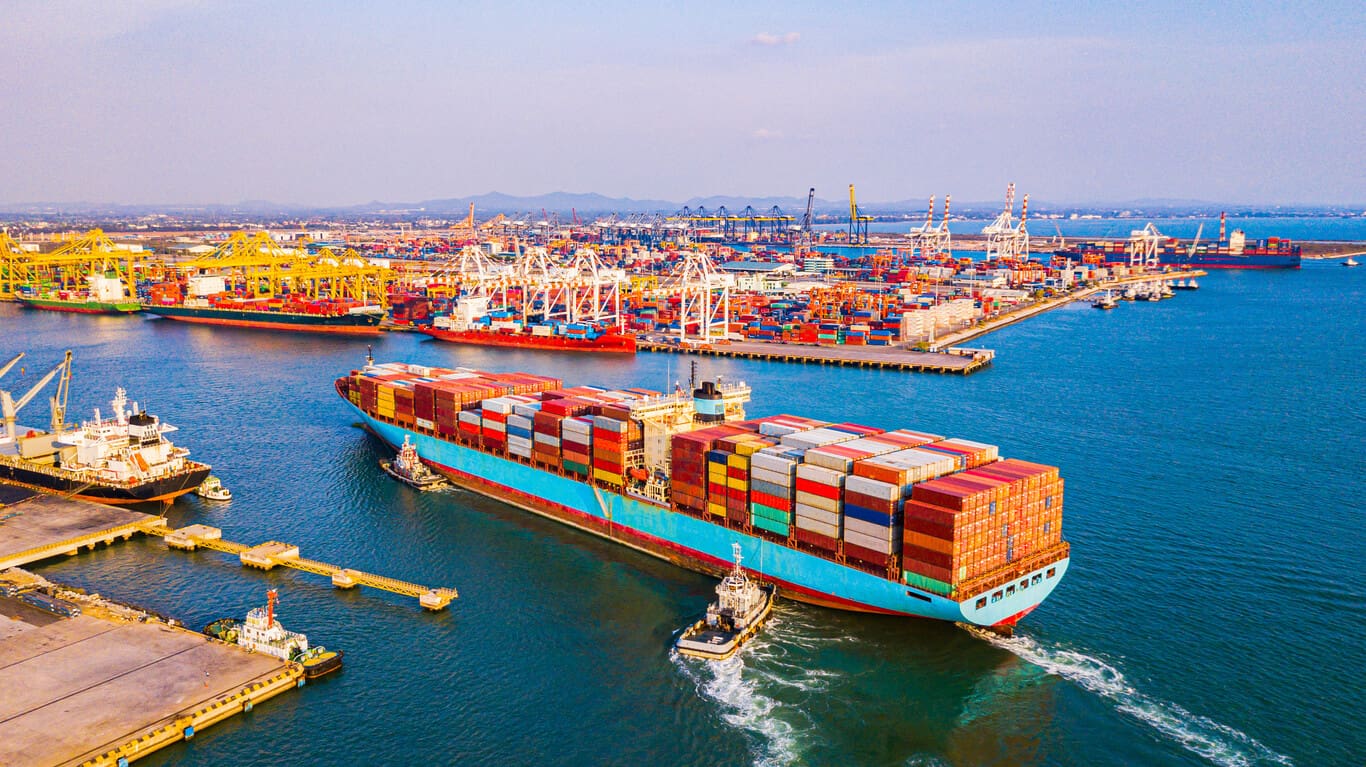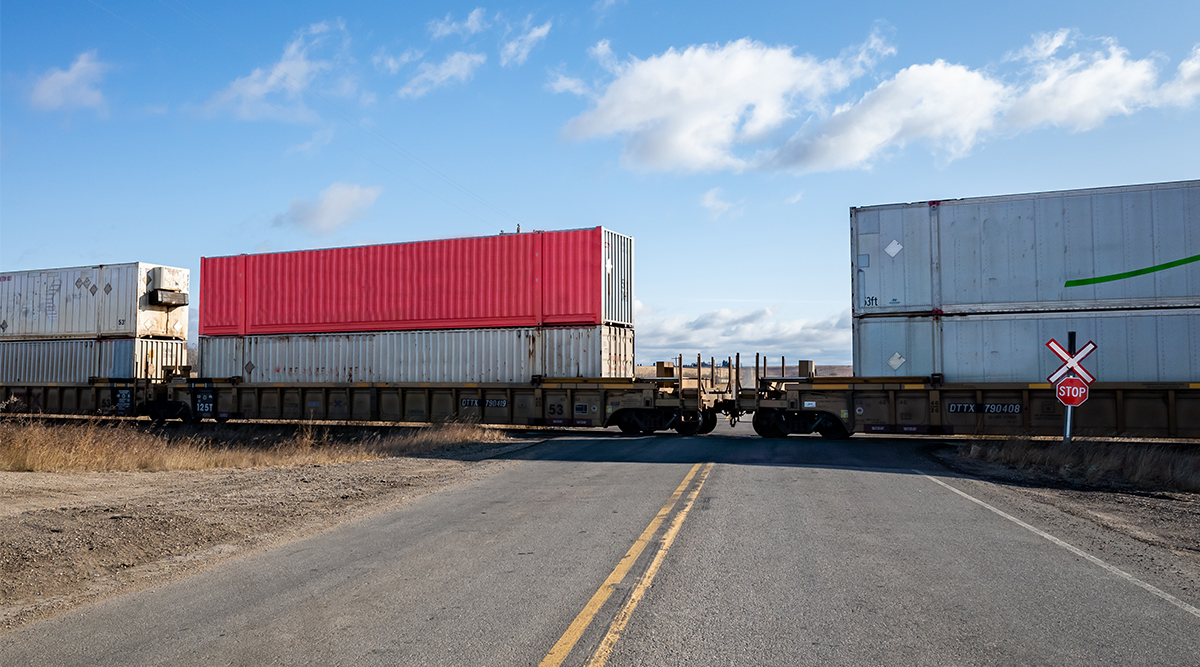Issue 26: ILWU Contract Negotiation Update, Import Volumes at West Coast Ports & More
A WORD FROM LEGACY
Summer is finally here and with it, bright sunshine, warm weather and longer days. In addition to the usual seasonal changes, the coming of summer also ushers in the beginning of holiday season planning for many retailers. What better time, then, to discuss trends and major news stories within the logistics industry that are likely to have a lasting impact for months to come.
Let’s kick this month’s Shipment off with our usual Market Update.
MARKET UPDATE
LMI Continues Its Steady Descent, Down 2.6 Points from April to May
The May 2022 Logistics Manager’s Index (LMI) Report , released on June 7, came in at a reading of 67.1 — a full 2.6 points down from April 2022’s reading of 69.7. Although May’s reading is still higher than the all-time average of 65.3, this downward trajectory indicates a “regression towards the mean after nearly two years of rapid growth.” Contributing factors behind this reading include an increase in transportation capacity (+7.8) and a decrease in transportation prices (-8.7), coupled with more sustainable growth in the warehousing and inventory markets.
The U.S. economy contracted by 1.5% in Q1 ‘22, but consumer spending remains strong — up 3.1% year-over-year, according to the National Retail Federation — and the Congressional Budget Office expects GDP to grow by 3.1%.
China’s economy, by comparison, has contracted as a result of three months’-worth of COVID lockdowns, which has led to shipment delays to North America. While this is welcome China’s economy, by comparison, has contracted as a result of three months’-worth of COVID lockdowns, which has led to shipment delays to North America. While this is welcome news for carriers and ports, which finally have the ability to begin working through backlogs, it’s inspired firms to take a defensive stance and increase their inventory levels. Shippers aren’t at a total loss, though: Slowdowns in China have lowered shipping costs, with the cost of shipping a 40-foot container from China to Long Beach down to nearly $8,000 in June 2022, compared to $13,000 in January 2022.
Continuing on with the theme of the state of economy, the LMI reports that 1.2 million jobs have been added over the past three months, many of which are in the trucking, warehousing and parcel delivery sectors. Trucking companies alone accounted for 13,300 of the 390,000 jobs added in May — a substantial increase that can be attributed to the fact that more owner-operators are signing with larger firms, which are less vulnerable to high diesel costs and sudden changes in the spot market.
Although the number of jobs have increased, firms continue to struggle to fill open roles. The labor shortage in the warehousing sector has led firms to increase their investment in automation by as much as $646 million in Q1, and analysts anticipate a 20%–30% increase in coworking bots by 2026 . Lack of warehousing capacity is also a persistent issue that has led container dwell times to creep up to an average of six days (compared to a norm of two days).
With that said, warehouse capacity very briefly entered into a state of expansion between May 17–31, with the LMI registering a rate of 50.7 in its Warehousing Capacity index, before returning to a state of contraction. This brief shift has inspired cautious optimism amongst industry experts — indeed, the LMI reports that “if this loosening in Warehousing Capacity continues into June, it would mark the first increase in available capacity since August 2020.”
It’s possible that the shift came about as a result of Amazon pumping the breaks on its aggressive network expansion plan. In light of the eCommerce giant’s announcement, competing firms were quick to snap up available space, with Walmart announcing four new eCommerce fulfillment centers with proprietary automation and next- or two-day shipping capabilities. Until we see a more substantial expansion in warehouse capacity, warehouse utilization and warehousing prices are expected to remain high, with the LMI’s Warehousing Utilization and Warehousing Prices indices coming in at ratings of 72.9 and 87.5, respectively.
Amidst all of this, contract negotiations between the International Longshore and Warehouse Union and the Pacific Maritime Association — which we’ll provide an update on later in this Shipment — are ongoing. Although talks are progressing well, there’s still concern along East Coast ports about absorbing West Coast volumes should negotiations fall apart and workers choose to strike.
Last, but certainly not least, transportation capacity is in a state of expansion, with the LMI’s Transportation Capacity registering a reading of 64.7, and tender rejection rates are on the decline. Transportation prices continue to increase, albeit at a more conservative rate as shippers move away from the spot market and toward the contract market. Other related transportation factors have begun to stabilize — it’s now a question whether prices will follow suit. On the whole, LMI analysts predict a larger trend toward stabilization based on changes observed between early and late May; whether that prediction is accurate remains to be seen.
For a complete overview of the May 2022 LMI across all indices, please refer to the chart below:
| LOGISTICS AT A GLANCE | |||||
| Index | May 2022 Index | April 2022 Index | Month-Over-Month Change | Projected Direction | Rate of Change |
| LMI® | 67.1 | 69.7 | -2.5 | Growing | Slower |
| Inventory Levels | 69.3 | 72.3 | -3.0 | Growing | Slower |
| Inventory Costs | 88.1 | 87.7 | 0.4 | Growing | Faster |
| Warehousing Capacity | 45.9 | 40.8 | 5.0 | Contracting | Slower |
| Warehousing Utilization | 72.9 | 70.9 | 2.0 | Growing | Faster |
| Warehousing Prices | 87.5 | 85.8 | 1.7 | Growing | Faster |
| Transportation Capacity | 64.7 | 56.9 | 7.8 | Growing | Faster |
| Transportation Utilization | 64.3 | 64.3 | 0.0 | Growing | No Change |
| Transportation Prices | 65.3 | 73.9 | -8.7 | Growing | Slower |
Also in Today’s Shipment:
- OSRA is officially signed into law — but will the FMC make good use of its new enforcement abilities?
- ILWU and PMA issue joint statement reassuring anxious retailers that contract negotiations are proceeding as planned.
- Import volumes at Port LA remain strong despite rising inflation and flagging consumer confidence.
IN THE NEWS

Much-Anticipated Ocean Shipping Reform Act Signed Into Law
On Thursday, June 16, 2022, President Biden signed the Ocean Shipping Reform Act (OSRA) into law. The bill, which is part of the administration’s plan to address consumer price inflation, will attempt to address ocean carrier price hikes by increasing the authority of the Federal Maritime Commission (FMC), in order to promote U.S. export activity.
OSRA has gained praise from multiple industry groups. In an official release, NRF Senior Vice President for Government Relations, David French, stated that “Making OSRA federal law helps address longstanding supply chain and port disruption issues.” American Trucking Associations President and CEO, Chris Spear, voiced similar support, saying “This bill provides important tools to address unjustified and illegal fees collected from American truckers by the ocean shipping cartel — fees that have contributed to shipping lines raking in $150 million in profits just last year.”
Perhaps unsurprisingly, the World Shipping Council was more reticent about the bill, expressing disappointment at the “continued mischaracterization of the industry by U.S. government representatives,” but ultimately committed to “[working] with federal and state policymakers, as well as other parties, to pursue the necessary lasting solutions […] that can have real impact in strengthening the intermodal transportation system.”
Whether OSRA has its intended impact is largely dependent on the FMC. As Supply Chain Dive notes, the FMC “has been historically slow to regulate the shipping industry.” OSRA strengthens the FMC’s enforcement abilities, granting the agency the authority to self-initiate investigations into carrier’s business practices and take more aggressive action on detention and demurrage. It also increases agency funding, to the tune of $32.9 million for FY2022; by FY2025, that funding will increase to $49.2 million.
There are, however, limits to the FMC’s abilities. “A lot of problems are really problems of supply and demand, and those may be beyond the ability of any agency to handle,” said FMC Commissioner Carl Bentzel in a statement to Supply Chain Dive. That may very well be true, but until those limits are discovered, it’s all eyes on the FMC.
Smooth Sailing: ILWU & PMA Issue Joint Statement on Ongoing Labor Talks
Contract negotiations between the International Longshore and Warehouse Union (ILWU) and the Pacific Maritime Association (PMA), which began last month, are still underway and expected to extend beyond the July 1 deadline.
As a reminder, ILWU represents nearly 22,000 dockworkers at major ports along the West Coast, including the Ports of Long Beach and Los Angeles, while PMA represents the 70 ocean carriers and marine terminal operators at those same ports. Historically, negotiations between the two groups have been fraught, with breakdowns in communication leading to port shutdowns in 2002 and work slowdowns in 2014.
Various publications have also pointed out that negotiations could hit a snag around the contentious topic of automation. While PMA has been a vocal proponent of port automation, publishing a study on its benefits in the days preceding the talks — a study that ILWU Coast Committeeman Frank Ponce De Leon called “a self-serving document” — ILWU has been vehemently opposed, maintaining that automation would eliminate jobs. Given this larger context, shippers are understandably concerned about the potential outcome of conversations surrounding this high-stakes labor agreement.
In order to allay these fears, ILWU and PMA issued a joint statement on June 14, saying that although “they are unlikely to reach a deal before the July 1 expiration of the current agreement […] Neither party is preparing for a strike or a lockout, contrary to speculations in news reports.” This statement came shortly on the heels of President Biden’s recent visit to San Pedro, California, during which he met with both groups aboard the Battleship U.S.S. Iowa to discuss supply chain congestion and their commitment to reaching a collective bargaining agreement amenable to both parties.
All the same, shippers aren’t taking any chances. Major firms across the country — including Macy’s and Joann — are closely monitoring the situation and have taken precautionary measures to mitigate risk, including adjusting lead times and forecasting and creating contingency plans to reroute shipments through East Coast ports.

Import Volumes Remain Strong, According to Port of LA Executive Director
As noted in our Market Update, consumer spending remains strong in the face of rising inflation, up 3.1% YoY. For concrete evidence of this, look no further than the Port of LA: The port handled 499,960 twenty-foot equivalent units (TEUs) of imports in May, 20% higher than the prior five-year average. It also handled 125,656 TEUs of exports, a 14.35% YoY increase. The Port of Long Beach reported similarly high volumes — 436,977 TEUs of imports and 118,234 TEUs of exports.
In a June 14th press conference, Port of LA Executive Director Gene Seroka stated that “While we’re all cost-minded and we feel it at the pump and the grocery store, we’re going to continue,” adding although the types of goods American consumers has changed, “retailers continue to replenish inventories […] sales of finished goods remain strong and components going to American factories are equally as impressive.” Seroka also reported that there had been no impact on import flows as a result of COVID lockdowns in Shanghai.
In many ways, this strong consumer demand is as much a curse as it is a blessing, sending shippers scrambling to replenish inventories and hitting snags in the global supply chain along the way. And, as Freightwaves reports, strong import volumes have also caused slowdowns, with the 30-day average of cargo moving off docks falling by over 20,000 TEUs and street dwell time for containers ballooning from 3.5 to nine days.
The downstream impact on rail is similarly concerning: “There are now 29,000 containers on the terminals waiting for rail; 15,000 of those have been waiting for nine days or more. In normal times, there’d be around 9,000 containers, none waiting over nine days. As recently as February, there were no containers waiting nine days or more, but since then, rail cargo has increased sixfold.”
Should the import boom persist as Seroka predicts, it’ll also add pressure to the already high- stakes labor negotiations between ILWU and PMA, creating an even greater need for sufficient labor resources to keep shipments moving.
Thanks for joining us for another great Shipment. For even more logistics news and insights, we recommend visiting our blog or resource center, or talking directly to the experts on our team. And if there’s anything you’d like to see in next month’s Shipment, let us know! We’re always interested in hearing what our readers have to say.
Until then, this is the Legacy team, signing off.
-
6 Cornerstones to a Successful 3PL-Customer Relationship
Hiring a third-party logistics (3PL) provider is a strategic approach for businesses to increase their capacity without expanding their...
+ Read more -
Canadian Rail Strike? – What We Know So Far
On May 1st, CN (Canadian National Railway) and CPKC (Canadian Pacific Kansas City) rail workers voted overwhelmingly to authorize a strike...
+ Read more -
2024 Q1 Freight Landscape: Trends, Challenges, and Predictions
As the first quarter of 2024 comes to an end, here are some observations over the past few months as well as predictions about the trucking...
+ Read more




